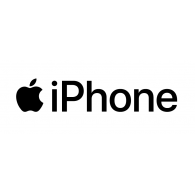How Do I Find the RSRP Signal Strength on My Phone?
Frequently Asked Questions
1. Adjust the External (Outdoor) Antenna
1. Adjust the External (Outdoor) Antenna
If you are using a directional antenna, adjust the external (outdoor) antenna in small amounts to reduce the signal it receives. Stop between movements to check for overload warnings and determine the status of the cell signal strength.
You want your external antenna where the amplifier operates at full capacity to distribute the signal evenly without dropping. It can take patience, but this method is the best first step.
If adjusting the external antenna doesn’t work, move to the next step.
2. Try an Attenuator
2. Try an Attenuator
If your problem is caused by multiple cell towers located very close to your building, try an attenuator. This device decreases the incoming signal strength by resting on or touching your antenna cable. However, anyone who already has a weak signal will lose signal strength, too, so be sure it isn't the opposite problem.
The next step should be approached as a last resort.
3. Switch the Amplifier
3. Switch the Amplifier
You might need to purchase an amplifier that can handle stronger signals. The price varies substantially, but it may be what you need to get your cellular signal working optimally.
It's worth the investment if this is what's causing your problem.
Frequently Asked Questions
1. Check the Directional Antenna Position Relative to the Building
1. Check the Directional Antenna Position Relative to the Building
Your directional antenna must face away from the building. If it’s pointed toward part of the roof or across a roof ridge, it’s probably picking up ambient signals radiating from inside. Shift the antenna to point away from the roof.
2. Move the Interior and Exterior Antennas
2. Move the Interior and Exterior Antennas
CAUTION: Always switch off the power to the amplifier before moving the antennas.
Attempt to reposition both interior and exterior antennas so they are farther apart. To optimize performance, you can spread the antennas further apart horizontally. However, you can try to separate them vertically if you lack space. Place them where you receive the ideal signal strength.
Spacing the antennas vertically can be more effective than horizontal positioning, but both have advantages. Once you have made the necessary adjustments, switch the amplifier power on and check for continuing oscillation.
If you still see a problem, try another antenna position.
3. Shield the Exterior Antenna
3. Shield the Exterior Antenna
This is the step of last resort.
Move the external antenna somewhere to align with a large object, like an air conditioning unit or chimney. You need to put significant mass between the antenna and the rest of the building.
If your exterior antenna is indoors, shield it with something made of metal like aluminum foil, or place it behind a filing cabinet. If you want to block the signal entirely, set the exterior antenna behind the interior antenna.
If you still experience issues, reach out to Novotech for help. As the leading provider of signal boosters, we're here to ensure you can successfully troubleshoot any problems you may have with your Cel-Fi or weBoost device.


